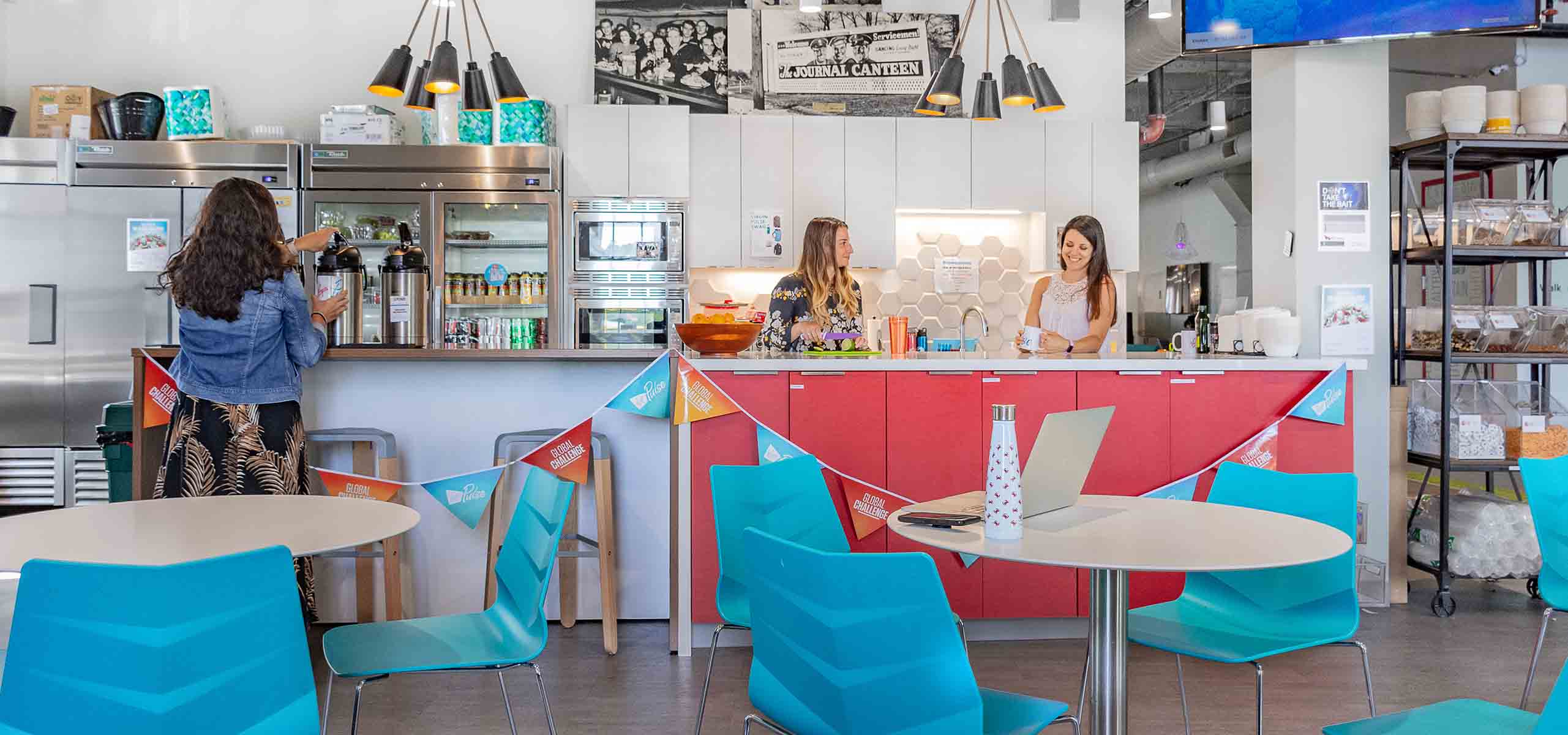There are few perks that have gotten as much attention as free food in the workplace. Ok, well, maybe ping pong tables.
At Virgin Pulse, employees have access to a variety of free, healthy snacks and the occasional breakfast or catered lunch. And while we have ping pong tables, the free food is what everyone gets excited about.
The benefits of free food in the workplace
Employers shouldn’t overlook this small, but mighty benefit. Free food in the workplace entices millennials and helps employers stand out in today’s competitive, candidate-driven market. (It’s a staple at top-tier companies like Google, LinkedIn, and Airbnb.) Providing free food may also boost productivity by keeping your employees fuelled with healthy, nutrient-dense foods and reducing the need to leave the workplace to take care of hunger pangs.
While research is somewhat limited, small surveys point to the popularity of free food. One survey found 60% of participants rated free food as a top three favourite work perk, while 90% of employers found providing snacks helped their employees build stronger relationships with one another.
To top it all off, free food is often less expensive and easier to manage than other benefits. So, for a smaller cost than say, tuition reimbursement, you can boost employee satisfaction and contribute to a culture of wellbeing.
If you’re ready to start offering this sought-after perk or want to make changes to your existing program, there are a few things to do to set your company up for success. Here’s how to create a nutritionally-minded workplace that supports your people’s health and wellbeing.
Put resources in place
Offering free food in the workplace can take some manpower, so consider these questions before jumping in:
- Do you have ample space and resources to properly store fresh food items?
- Do you have the personnel to manage snack stations, keeping them clean and stocked?
- Are you buying the food items, or would it be more time- and/or cost-effective to work with a local vendor?
- Do you have a recycling plan in place for paper, plastic, cans, glass and food waste?
What qualifies as a healthy snack?
A healthy eating plan can be ruined with too much snacking on carb-heavy or sugar- and sodium-filled snacks. Here are some smart snacking ideas:
- Offer fresh fruit and whole-grain options like brown rice cakes, oatmeal or high-fibre cereal bars.
- Be wary of granola bars — many are high in sugar and don’t provide sustained energy.
- Snacks like eggs, peanut butter, low-fat cheese and low-fat yogurt are good sources of protein and keep you feeling full for longer.
- Make offerings inclusive by considering dietary needs and restrictions (i.e., nut-free, gluten-free, kosher and vegan options).
- Don’t forget accessible water stations to encourage proper hydration!
Take steps to minimise waste
Snacking stations can produce a lot of extra waste, so look for ways to reduce the impact on the environment:
- Refrigerated vending machines consume a lot of energy; they generally offer unhealthy options and produce a lot of plastic waste. Organic, fresh fruit items are healthier and can also be composted.
- Single-use plastics, like plastic water bottles, negatively impact the environment, while water coolers encourage greener water consumption. And forgo the plastic straws — they can’t be easily recycled and they’re harmful to wildlife.
- Check out how Virgin Pulse’s HQ has incorporated green initiatives.
Offering healthy snack options helps employees make healthy food choices. Before reducing or removing your employees’ favourite treats, educate them about healthy snacking and why changes are being made.
